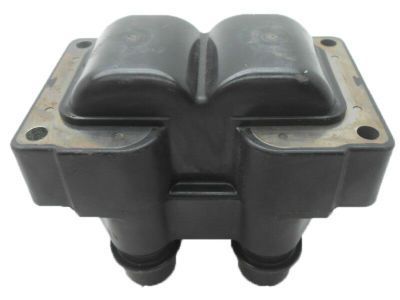×
- Live Chat
- 1-888-788-9341


My Garage
My Account
Cart
Genuine Ford Bronco II Ignition Coil
Ignition Coil Resistor- Select Vehicle by Model
- Select Vehicle by VIN
Select Vehicle by Model
orMake
Model
Year
Select Vehicle by VIN
For the most accurate results, select vehicle by your VIN (Vehicle Identification Number).
1 Ignition Coil found
Ford Bronco II Coil Assembly - Ignition
Part Number: E8TZ-12029-A$69.85 MSRP: $117.82You Save: $47.97 (41%)Ships in 1-2 Business Days
Ford Bronco II Ignition Coil
Ford Bronco II Ignition Coil is also one of the most important auto parts that functions in the starting system. Transforming the low voltage from the battery into high voltage power, the ignition coil produces the spark the needed for ignition of the air/fuel mixture in the engine cylinders. This process involves the use two wire coils, that is the primary and secondary coils of insulated cooper wire wound round an iron center which is housed. The primary circuit comes into contact with the battery and triggering device and the secondary circuit includes the high tension lead and spark plug wires. The types of ignition coils include the distributor ignition systems' ignition coils and the coil-on-plug ignition coils have been installed in various Bronco II models at one time or another. Damage to the ignition coil can lead to no start scenario or rough running, thus it is crucial that a regular check is done on the same for proper running of the car.
We provide a wide range of Ford Bronco II Ignition Coil at the best prices possible. If you need Ford Bronco II Ignition Coil, you can shop with confidence on our website. All our OEM parts come with a manufacturer's warranty and are delivered to your door step with a fast delivery service.
Ford Bronco II Ignition Coil Parts Questions & Experts Answers
- Q: How to test and replace an ignition coil on Ford Bronco II?A: Turn off ignition, disconnect battery, detach wiring harness from ignition coil. Check terminals for dirt, corrosion, damage. Use ohmmeter to measure resistance between terminals: 2.3L engines B+ to Coil 1, B+ to Coil 2 or 3, B+ to Coil 4. 4.DL engines B+ to Coil 1, 2, 3. Resistance should be 0.3-1.0 ohms. If not, replace coil. Measure resistance between coil terminals and spark plug wire towers. If 6,500-11,500 ohms, coils are OK. If not, replace coil pack. On 2.3L engines, if one pack is bad, other doesn't need replacing. 4.0L engine has one pack with three coils. Disconnect battery, unplug harness from coil pack. Remove spark plug wires, screws, and coil pack. Install new pack, tighten screws. Apply dielectric compound to spark plug boots. Attach wires and battery.
- Q: How to assess the ignition coil and secondary wire on Ford Bronco II?A: To check the secondary wire and the ignition coil, begin by disconnecting the ignition coil connector and checking for dirt, corrosion, or damage. Use an already-known good coil and a spark tester to test for sparks. If a spark is present, measure the resistance in the ignition coil wire. Replace it if its resistance is over 7000 ohms per foot, if within specification, replace the ignition coil. To check for voltage supplied to the ignition coil, remove the coil connector and take readings at positive terminal of the ignition coil. If it is more than 90% of battery voltage, check through the ignition coil connector and terminals; otherwise, examine wiring or ign. switch. For measuring the primary resistance of the ignition coil with an ohmmeter, connect between positive and negative terminals of the coil. If this reading is between 0.3-1.0 ohms, then there is no problem with your ignition coils hence proceed to secondary resistance test, otherwise replace your ignition coils.






